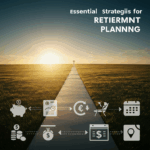Emergency funds represent a cornerstone of sound financial planning, acting as a buffer against unforeseen expenses that could otherwise disrupt stability. In an era marked by economic uncertainties, such as inflation and job market shifts, having readily accessible savings can prevent reliance on high-interest debt or premature withdrawals from investments. This guide delves into the significance of emergency funds, providing educational insights for those seeking to strengthen their financial knowledge without advocating for any particular financial decisions.
Why Emergency Funds Matter
An emergency fund is essentially a pool of money set aside for unexpected events, like medical bills, car repairs, or sudden unemployment. Its primary purpose is to offer financial security, reducing stress during crises and allowing individuals to maintain their lifestyle without derailing long-term goals.
Recent data underscores the prevalence of inadequate preparedness. For instance, nearly one in four Americans have no emergency savings at all. Additionally, 37% of Americans indicate they couldn’t afford an unexpected expense over $400. In 2023, 59% of Americans lack sufficient savings to cover a $1,000 emergency expense, despite low unemployment rates. These figures highlight how economic pressures, including elevated interest rates and income changes, have led 73% of Americans to save less for emergencies. Without such a fund, individuals may turn to credit cards or loans, potentially exacerbating debt—41% of U.S. adults already carry credit card balances. Building an emergency fund fosters resilience, aligning with broader financial wellness by preserving other assets like retirement accounts during tough times.
Determining How Much to Save
The ideal emergency fund size varies based on personal circumstances, but general guidelines suggest aiming for three to six months’ worth of living expenses. This covers essentials like housing, food, utilities, and transportation, providing a safety net during periods of income loss.
In 2023, recommendations point to an average target of around $35,000 for a typical American household, representing about 40% of annual income for six months of coverage. However, actual savings levels fall short: the median emergency savings among Americans is only $600. Factors influencing the amount include job stability, family size, and health considerations—those with irregular income might target nine to twelve months. Starting small and scaling up can make this goal achievable, with 46% of Americans currently having enough to cover three months of expenses.
Where to Keep Your Emergency Fund
Accessibility and safety are key when storing an emergency fund. High-yield savings accounts or money market accounts are common choices, offering liquidity, FDIC insurance up to $250,000, and modest interest growth without market risk.
Avoid tying funds to volatile investments like stocks, as downturns could diminish value when needed most. Instead, opt for accounts with no penalties for withdrawals, ensuring quick access. This approach balances preservation with minor earning potential, supporting overall financial equilibrium.
Strategies for Building an Emergency Fund
Establishing an emergency fund requires disciplined habits. Here are structured approaches:
- Set a Clear Goal: Calculate monthly expenses and multiply by your target months (e.g., three to six). Track progress to stay motivated.
- Automate Savings: Direct a portion of each paycheck—aim for 5-10% initially—into a dedicated account via automatic transfers.
- Cut Non-Essential Spending: Review budgets to identify areas like dining out or subscriptions, redirecting those funds to savings.
- Utilize Windfalls: Allocate tax refunds, bonuses, or gifts toward the fund rather than discretionary purchases.
- Start Small: Even $50 monthly accumulates over time. Consistency is more important than large initial deposits.
These methods can help overcome common barriers, with 48% of Americans reporting emergency funds sufficient for three months in recent surveys.
Common Pitfalls to Avoid
While building an emergency fund, certain errors can hinder progress:
- Dipping In for Non-Emergencies: Define “emergency” strictly to preserve the fund for true needs, avoiding temptations like vacations.
- Ignoring Inflation: Adjust targets periodically, as rising costs erode purchasing power.
- Overlooking Accessibility: Funds in illiquid assets defeat the purpose; prioritize ease of access.
- Neglecting Replenishment: After use, prioritize rebuilding to maintain protection.
Awareness of these issues promotes sustainable saving practices.
Integrating Emergency Funds into Broader Financial Planning
An emergency fund complements other financial elements, such as investing, insurance, and retirement planning. It protects investment portfolios from forced sales during market dips and ensures insurance premiums or deductibles can be met promptly. In contexts like cryptocurrency or general finance, it provides a stable foundation, allowing exploration of higher-risk assets without jeopardizing essentials. Overall, it enhances holistic planning, contributing to long-term wealth preservation.
Resources for Further Exploration
To deepen understanding, consider resources like the Federal Reserve’s reports on household economics or financial education sites offering savings calculators. Books such as “Your Money or Your Life” by Vicki Robin provide timeless insights, while online tools from banks can simulate fund growth.
In summary, emergency funds play a vital role in financial planning by offering protection against life’s uncertainties. Through thoughtful accumulation and management, they support stability and confidence, encouraging readers to reflect on their own financial preparedness within the wider market context.


